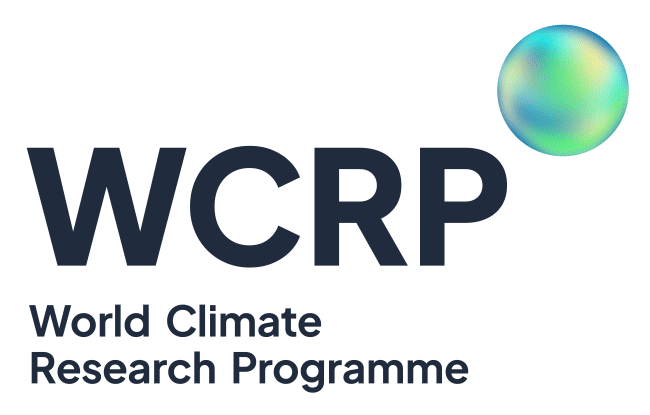The core experiment is an 'Interactive Atmosphere-Ocean-Land-Ice Prediction Experiment' emphasizing the use of comprehensive coupled general circulation models, which includes realistic interactions among the component models. The experiment is to perform seven-month lead ensemble (10-members) predictions of the total climate system. If possible longer leads and larger ensembles are encouraged. The initialization strategy is to use the best available observations of all the components of the climate system.
While the emphasis is on comprehensive coupled general circulation models, uncoupled component, intermediate, simplified and statistical models are encouraged to participate where appropriate. The fundamental experimental design is to mimic real prediction in the sense that no “future” information can be used after the forecast is initialized. For example, the PROVOST or DSP experiments would be excluded because they use observed SST as the simulation evolves, whereas the SMIP/HFP experiment could be included as a subset since no future information is used as the forecast evolves.
The component models should be interactive, but this is left open to encourage wider participation, e.g. for groups without sea ice or vegetation models. The only requirement is that no “future” information is used once the prediction is initialized. This requirement necessarily includes any tuning or training of the component models or the development of statistical prediction schemes.
Thus, the component models are:
Ocean - Open but interactive (e.g., slab mixed layer or GCM)
Atmosphere - Open but interactive (most likely a GCM)
Land - Open but interactive (e.g. SSiB, Mosaic, BATS, CLM, Bucket)
Ice - Open but interactive (e.g., thermodynamic or dynamic)
Protocol
Coupled models and resolution are left to the individual participants, but it is desirable that the models have a realistic simulation of the atmosphere, ocean, land and ice and the interactions among these components. Simplified component models (e.g., slab mixed layer or statistically predicted ice) are acceptable as long as no future information is used in developing the simplified model.
Atmospheric initial states are taken from NCEP (or ECMWF), with reanalysis in February, May, August and November of each year from 1979-present. Forecasts should be initialized at 00Z and 12Z on the last five days of each preceding month forming a 10-member ensemble. Other strategies for generating the ensemble members are acceptable as long as the basic principle of 'no future information' is not violated. Each ensemble member should be run for at least six months. Additional ensemble members and longer leads are encouraged.
a. Additional retrospective forecasts using each month of each year from 1979-present are encouraged.
b. Additional retrospective forecasts using initial conditions from each February, May, August, and November 1960-1978 are encouraged.
- Oceanic initial states: (if appropriate) to be taken from most appropriate ocean data assimilation system
- Sea Ice initial states: (if appropriate) to be taken from best available observational data
- Land initial states: (if appropriate) to be taken from most appropriate land data assimilation system or consistent offline analyses driven by observed meteorology (i.e., GSWP; GLACE2)
Data requirements
It is noted that some forecast providers may not be able to provide the complete list noted here. Participation is strongly encouraged even if all the data requirements cannot be met.
- Guide for data producers (see here for minimum monthly output requirements)
Atmospheric output
a. Every 24 hours at 00 GMT-
i. Pressure levels (instantaneous): Geopotential Height, Temperature, Velocity and specific humidity for 850, 500, 200, (if available 100, 50, 10; these higher pressure levels are used for interactions with SPARC) hPa.
ii. Surface (instantaneous): 2m Tmax - daily, 2m Tmin - daily, Total soil moisture, Snow depth, Sea surface temperature and surface radiative temperature over land (if available), Mean sea level pressure, soil heat flux over land (if available).
iii. Surface (accumulated): Total precipitation, Downward surface solar radiation, Downward surface longwave radiation, Surface net solar radiation, Surface net longwave radiation, Top net solar radiation, Top net longwave radiation, Surface momentum flux, latent and sensible heat flux.
b. Every 6 hours at 00, 06, 12, 18 GMT-
i. Surface (instantaneous): Total cloud cover, 10m wind, 2m Temperature, 2m Dew Point, 2 m specific humidity.
Oceanic output
a. Every Month-
i. Accumulated temperature, salinity and currents in the (at least) upper 400 m, surface fluxes of heat, momentum and fresh water, sea level height, mixed layer depth.
b. Every 24 hours at 00 GMT-
i. Temperature, salinity and currents in the (at least upper 400 m) at the equator, 2N and 2S (5N and 5S optional).
c. Every 6 hours at 00, 06, 12 18 GMT-
i. Surface fluxes of heat, momentum, and freshwater. Sea surface temperature and mixed layer depth
Sea ice output
a. Every 24 hours at GMT -
i. Surface fluxes of heat and momentum. Snow cover, Sea ice concentration, thickness and temperature.
Land surface output
Soil wetness and vegetation predicted.
Snow cover and depth predicted.
Chemical composition
Prescribed and varying. This explicitly includes the transient changes in the chemical composition from 1979-present.

